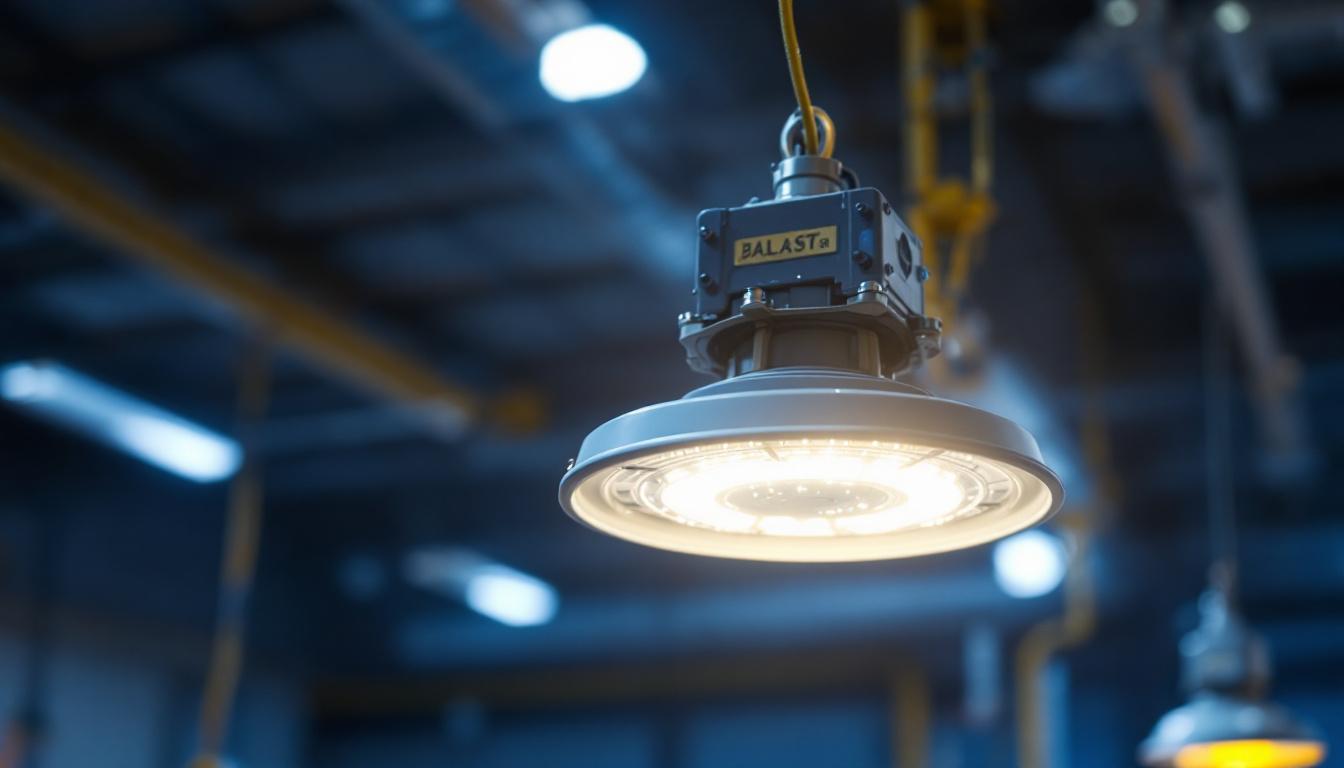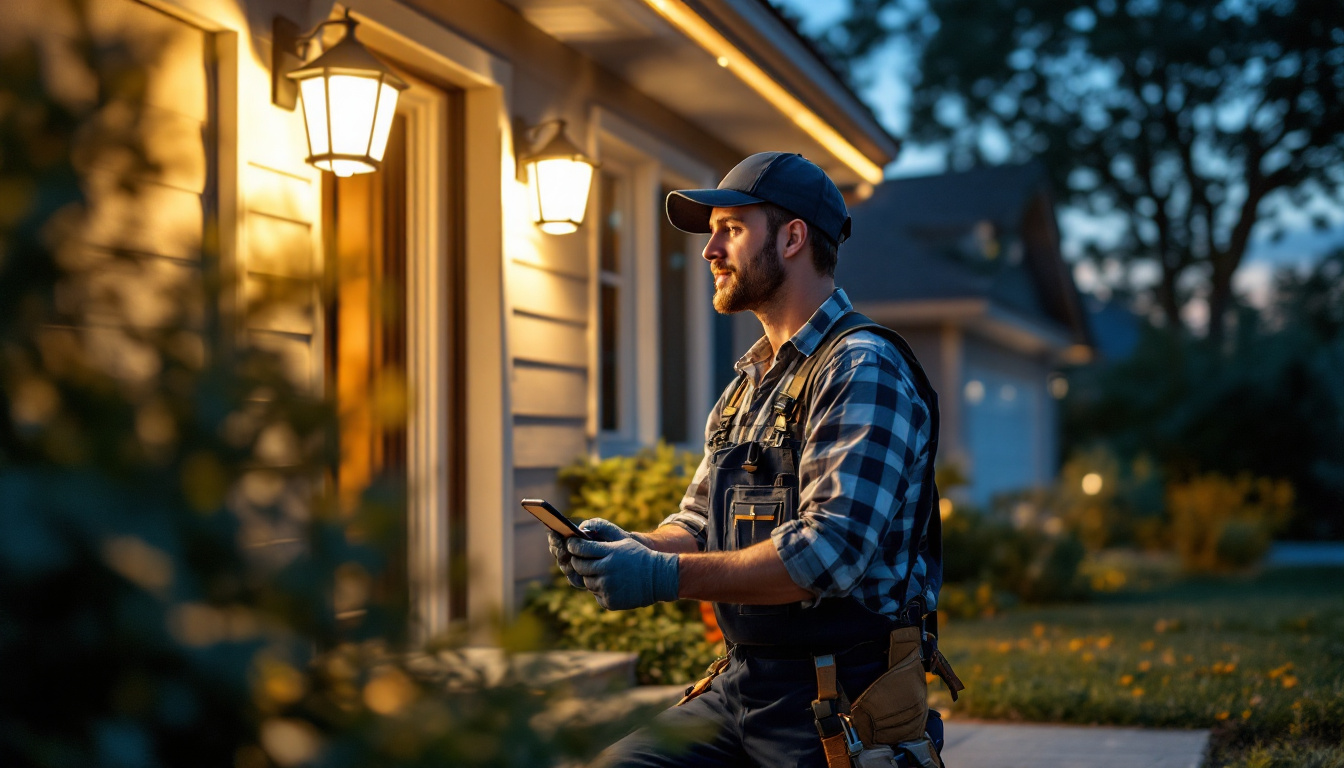
Ballast light fixtures play a crucial role in the operation of fluorescent and some LED lighting systems. These fixtures are designed to regulate the current to the lamps, ensuring that they operate efficiently and safely. Without a ballast, fluorescent lamps would not function properly, as they require a specific voltage to ignite and maintain a steady light output.
In essence, a ballast acts as a transformer, converting the incoming voltage to the appropriate level needed by the lamp. This conversion is vital for maintaining the longevity of the lighting system and preventing flickering or premature burnout of the bulbs. For lighting contractors, understanding the intricacies of ballast light fixtures is essential for effective installation and maintenance. Additionally, the choice of ballast can significantly impact the overall performance of the lighting system, influencing factors such as energy consumption, light quality, and operational costs.
Moreover, advancements in technology have led to the development of smart ballasts that can communicate with building management systems. These smart ballasts allow for real-time monitoring and control of lighting, enabling energy savings and enhanced functionality. By integrating with sensors and automation systems, they can adjust light levels based on occupancy or natural light availability, further optimizing energy use and contributing to sustainable building practices.
There are primarily two types of ballasts: magnetic and electronic. Magnetic ballasts have been around for decades and are typically heavier and less energy-efficient than their electronic counterparts. They operate using a simple electromagnetic principle to regulate current.
On the other hand, electronic ballasts are more modern and efficient. They use electronic circuits to control the current and voltage supplied to the lamps. This not only enhances energy efficiency but also improves the quality of light produced, reducing flicker and extending bulb life. Furthermore, electronic ballasts are often designed to be compatible with dimming systems, allowing users to adjust light levels according to their needs, which can be particularly beneficial in settings such as offices, theaters, and retail spaces.
For lighting contractors, compliance with local and national regulations regarding ballast light fixtures is paramount. These regulations often focus on energy efficiency standards, safety protocols, and environmental considerations. Understanding these regulations is essential to avoid penalties and ensure that installations meet the required codes.
Many jurisdictions have adopted energy efficiency standards that dictate the types of ballasts that can be used in commercial and residential applications. Familiarity with these standards can help contractors recommend the best products to their clients while also ensuring compliance with local laws. Additionally, as environmental awareness grows, regulations are increasingly emphasizing the reduction of hazardous materials in lighting products, pushing for the use of ballasts that are free from harmful substances like mercury. This shift not only protects the environment but also aligns with the growing demand for greener, more sustainable building practices.
Selecting the appropriate ballast for a lighting project can significantly impact the overall performance and energy efficiency of the system. Different types of fixtures and applications may require specific ballasts to function optimally. Therefore, lighting contractors must consider various factors when making their selection.
One key consideration is the type of lamp being used. For instance, T8 fluorescent lamps typically require electronic ballasts, while older T12 lamps may still operate with magnetic ballasts. Additionally, the wattage and voltage specifications of the lamps must match the ballast to ensure compatibility.
Using the right ballast not only enhances performance but also contributes to energy savings. Electronic ballasts, for example, can reduce energy consumption by up to 30% compared to magnetic ballasts. This reduction in energy use translates into lower utility bills for clients, making it a compelling selling point for contractors.
Moreover, energy-efficient ballasts often come with longer warranties and reduced maintenance costs, as they tend to extend the lifespan of the lamps they support. By educating clients about these benefits, contractors can position themselves as knowledgeable professionals who prioritize both performance and cost-effectiveness. Additionally, many energy companies offer rebates and incentives for projects that utilize energy-efficient lighting solutions, further enhancing the financial appeal of choosing the right ballast.
Proper installation of ballast light fixtures is critical to ensuring optimal performance. Lighting contractors should follow manufacturer guidelines closely and adhere to local electrical codes. This includes ensuring that all connections are secure and that the ballast is mounted correctly within the fixture.
Additionally, it’s essential to consider the environment in which the fixtures will be installed. For example, fixtures in damp or humid areas may require specific types of ballasts that are rated for such conditions. Understanding these nuances can help contractors avoid common pitfalls and ensure a successful installation. Furthermore, contractors should also assess the thermal management of the installation site, as excessive heat can adversely affect ballast performance and longevity. Ensuring adequate ventilation and selecting ballasts with built-in thermal protection can mitigate these risks and enhance the reliability of the lighting system.
Another aspect to consider is the potential for future upgrades or changes in technology. As LED lighting becomes more prevalent, many contractors are transitioning to LED-compatible ballasts that allow for easy retrofitting. This foresight can save clients from costly reinstallation in the future and keep their lighting systems current with evolving standards and technologies. By staying informed about the latest advancements in ballast technology, contractors can provide their clients with solutions that not only meet their immediate needs but also accommodate future developments in the lighting industry.
Despite their importance, ballast light fixtures can encounter various issues that may affect their performance. Lighting contractors should be aware of these common problems to provide effective troubleshooting and maintenance services.
One of the most common issues associated with ballast light fixtures is flickering lights. This can be caused by several factors, including a faulty ballast, poor electrical connections, or incompatible lamp and ballast combinations. When lights flicker, it can be distracting and may indicate that the ballast is nearing the end of its lifespan.
To address flickering, contractors should first inspect the ballast and connections. If the ballast is found to be defective, replacing it with a compatible unit is often the best course of action. Additionally, ensuring that the correct lamp type is used can prevent flickering issues from arising in the first place.
Overheating is another common issue that can lead to premature failure of ballast light fixtures. Factors contributing to overheating may include inadequate ventilation, incorrect installation, or using a ballast that is not rated for the wattage of the lamp. Over time, excessive heat can damage the ballast and reduce its efficiency.
Contractors should ensure proper ventilation around ballast installations and verify that the ballast is suitable for the application. Regular maintenance checks can help identify overheating issues before they lead to significant failures.
As lighting technology evolves, many contractors find themselves in situations where ballast replacement or upgrades are necessary. For instance, transitioning from fluorescent to LED lighting often requires replacing existing ballasts with compatible LED drivers. This can be a complex process, but understanding the differences between ballast and driver technologies is essential for a smooth transition.
When upgrading, contractors should also consider the energy efficiency benefits of newer technologies. Many modern LED drivers offer advanced features such as dimming capabilities and smart controls, which can enhance the functionality of lighting systems. Educating clients about these options can lead to more informed decisions and potentially higher satisfaction with the final outcome.
To ensure successful installations and long-lasting performance of ballast light fixtures, lighting contractors should adhere to several best practices. These practices not only enhance the quality of work but also build trust with clients.
The lighting industry is constantly evolving, with new technologies and regulations emerging regularly. Contractors should make it a priority to stay informed about the latest trends in ballast technology, energy efficiency standards, and compliance regulations. This knowledge can be a valuable asset when advising clients on their lighting needs.
Participating in industry seminars, workshops, and training sessions can provide contractors with insights into the latest products and best practices. Networking with other professionals in the field can also facilitate knowledge sharing and collaboration.
Effective communication with clients is essential for successful lighting projects. Contractors should take the time to explain the importance of ballast light fixtures, the options available, and the potential benefits of various choices. This transparency fosters trust and helps clients make informed decisions.
Additionally, providing clients with maintenance tips and guidance on how to identify potential issues can empower them to take an active role in the longevity of their lighting systems. This proactive approach can lead to stronger relationships and repeat business.
Keeping detailed records of all installations and maintenance performed on ballast light fixtures is a best practice that can pay off in the long run. Documentation provides a reference for future work and can help identify patterns in performance or issues that may arise over time.
Having a comprehensive record can also assist in warranty claims and compliance audits, ensuring that contractors are protected and prepared for any inquiries. This level of organization demonstrates professionalism and can enhance a contractor’s reputation in the industry.
Ballast light fixtures are a fundamental component of many lighting systems, and understanding their function, types, and compliance requirements is essential for lighting contractors. By selecting the right ballast, adhering to best practices, and maintaining clear communication with clients, contractors can ensure successful installations and satisfied customers.
As the industry continues to evolve, staying informed about new technologies and trends will be crucial for contractors looking to remain competitive. With a commitment to quality and compliance, lighting contractors can navigate the complexities of ballast light fixtures and provide exceptional service to their clients.
Ready to elevate your lighting projects with the highest quality ballast light fixtures? Look no further than LumenWholesale, where we offer spec-grade lighting products at unbeatable wholesale prices. Our extensive selection is designed to meet the most rigorous industry standards, ensuring you deliver reliable and high-performance lighting solutions to your clients. Say goodbye to inflated markups and hello to hassle-free bulk buying with free shipping. Choose LumenWholesale for the perfect blend of quality, affordability, and convenience. Discover the best value in wholesale lighting by visiting LumenWholesale today.

Discover the ultimate guide to covered ceiling lights and learn how to future-proof your lighting projects with innovative designs and energy-efficient solutions.

Discover innovative hacks for smart lighting contractors to enhance outdoor solar security lights.

Discover why 2 ft LED lights are essential for any lighting project.

Discover the essential insights lighting contractors need to know about exit signs, from compliance standards to innovative design solutions.